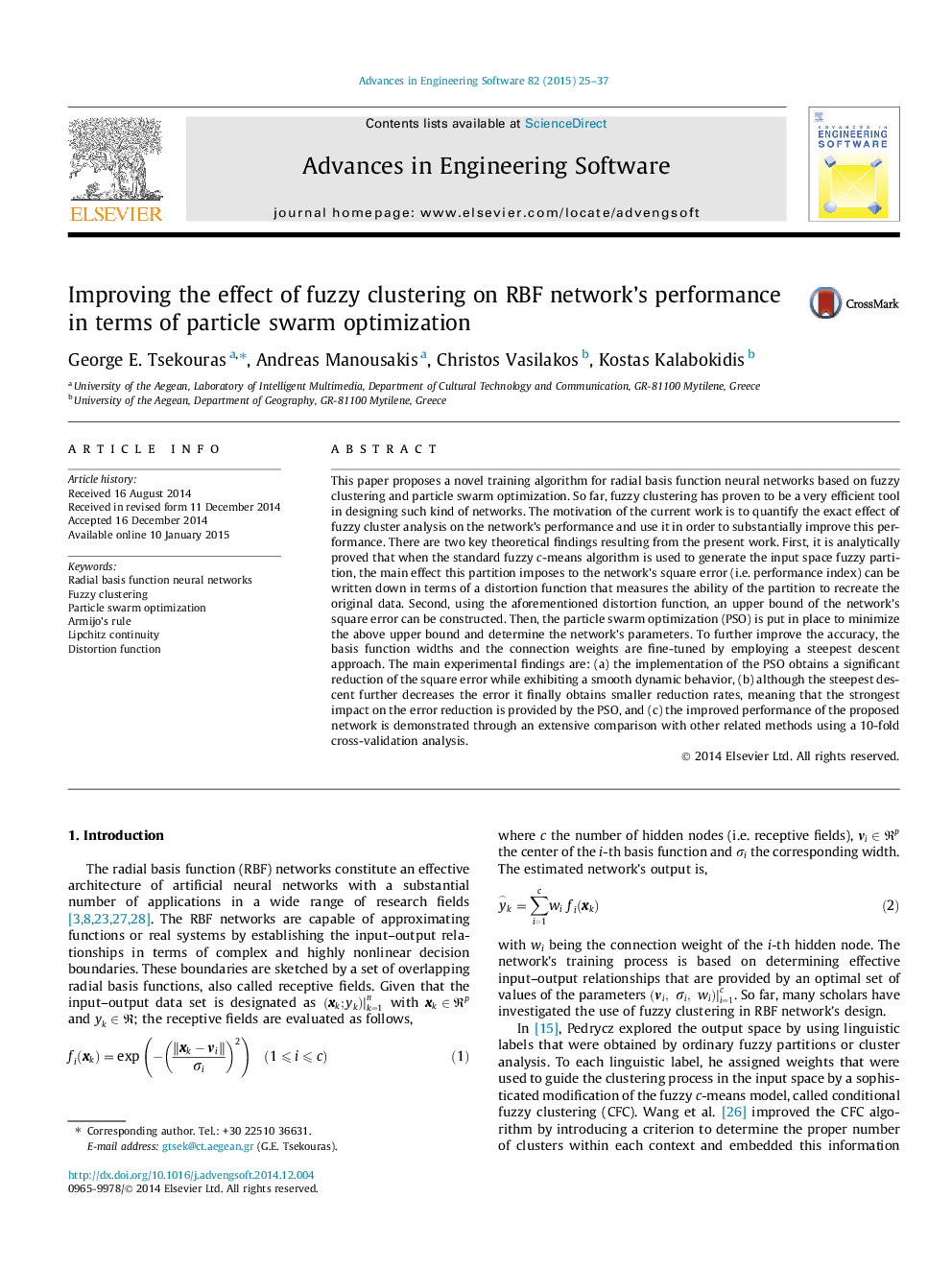| کد مقاله | کد نشریه | سال انتشار | مقاله انگلیسی | نسخه تمام متن |
|---|---|---|---|---|
| 569588 | 1452135 | 2015 | 13 صفحه PDF | دانلود رایگان |

• This paper quantifies the effect of fuzzy clustering in the design process of a typical RBF network.
• It is analytically shown that the fuzzy clustering acts to minimize an upper bound of the network’s square error.
• The PSO algorithm is used to minimize the upper bound and to provide an estimation of the network’s parameters.
• Finally, the widths and connection weights are further tuned using a steepest descent approach.
This paper proposes a novel training algorithm for radial basis function neural networks based on fuzzy clustering and particle swarm optimization. So far, fuzzy clustering has proven to be a very efficient tool in designing such kind of networks. The motivation of the current work is to quantify the exact effect of fuzzy cluster analysis on the network’s performance and use it in order to substantially improve this performance. There are two key theoretical findings resulting from the present work. First, it is analytically proved that when the standard fuzzy c-means algorithm is used to generate the input space fuzzy partition, the main effect this partition imposes to the network’s square error (i.e. performance index) can be written down in terms of a distortion function that measures the ability of the partition to recreate the original data. Second, using the aforementioned distortion function, an upper bound of the network’s square error can be constructed. Then, the particle swarm optimization (PSO) is put in place to minimize the above upper bound and determine the network’s parameters. To further improve the accuracy, the basis function widths and the connection weights are fine-tuned by employing a steepest descent approach. The main experimental findings are: (a) the implementation of the PSO obtains a significant reduction of the square error while exhibiting a smooth dynamic behavior, (b) although the steepest descent further decreases the error it finally obtains smaller reduction rates, meaning that the strongest impact on the error reduction is provided by the PSO, and (c) the improved performance of the proposed network is demonstrated through an extensive comparison with other related methods using a 10-fold cross-validation analysis.
Journal: Advances in Engineering Software - Volume 82, April 2015, Pages 25–37